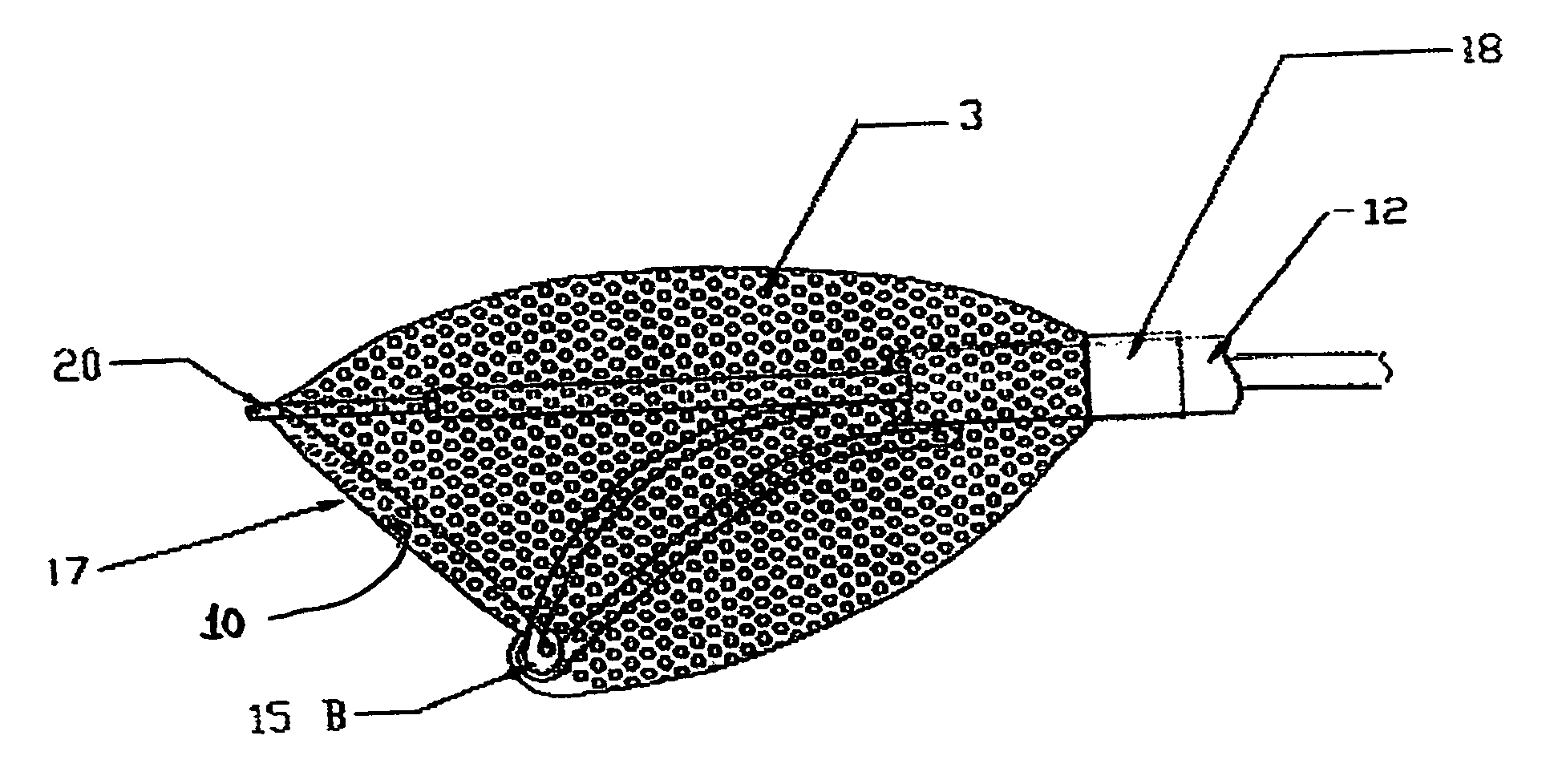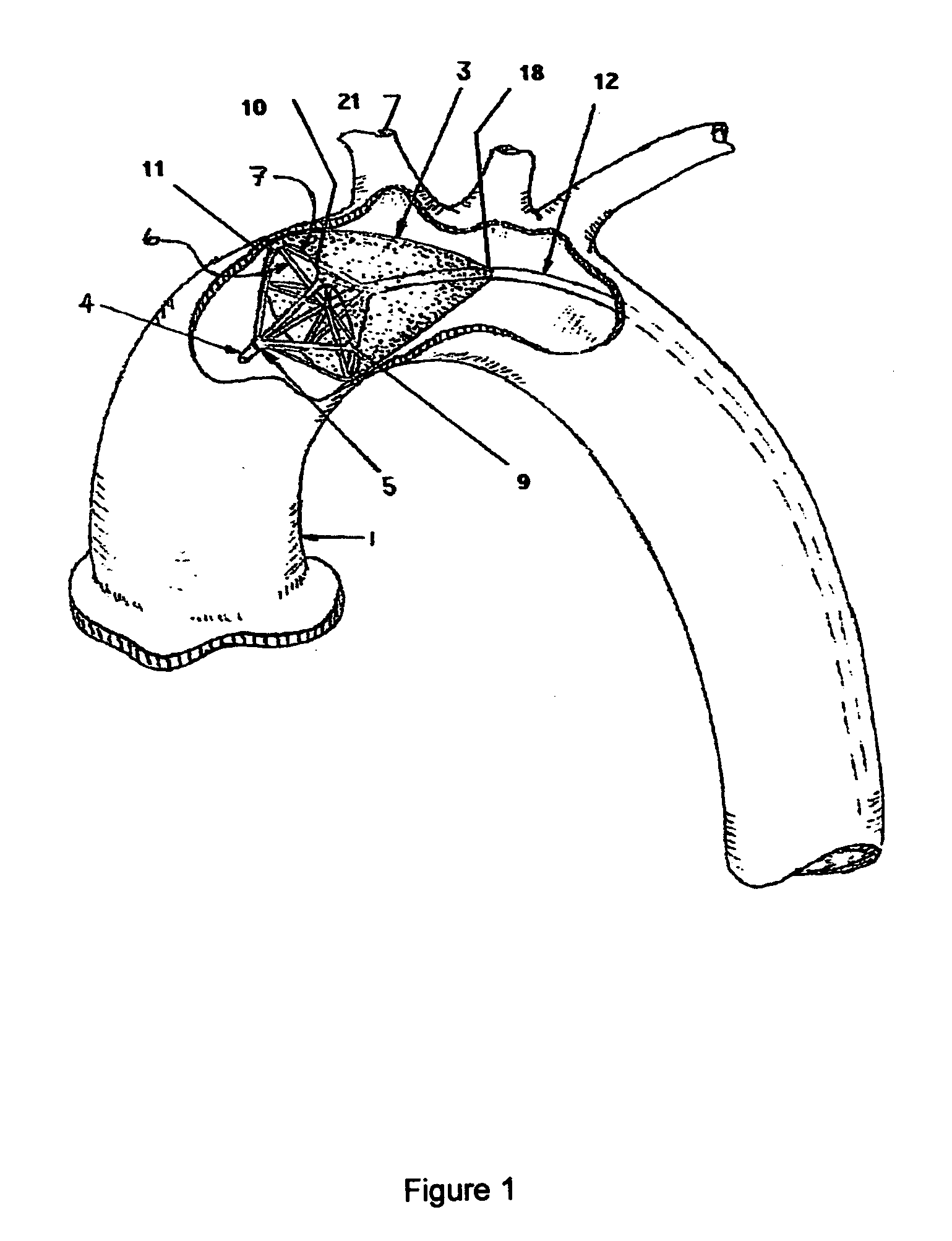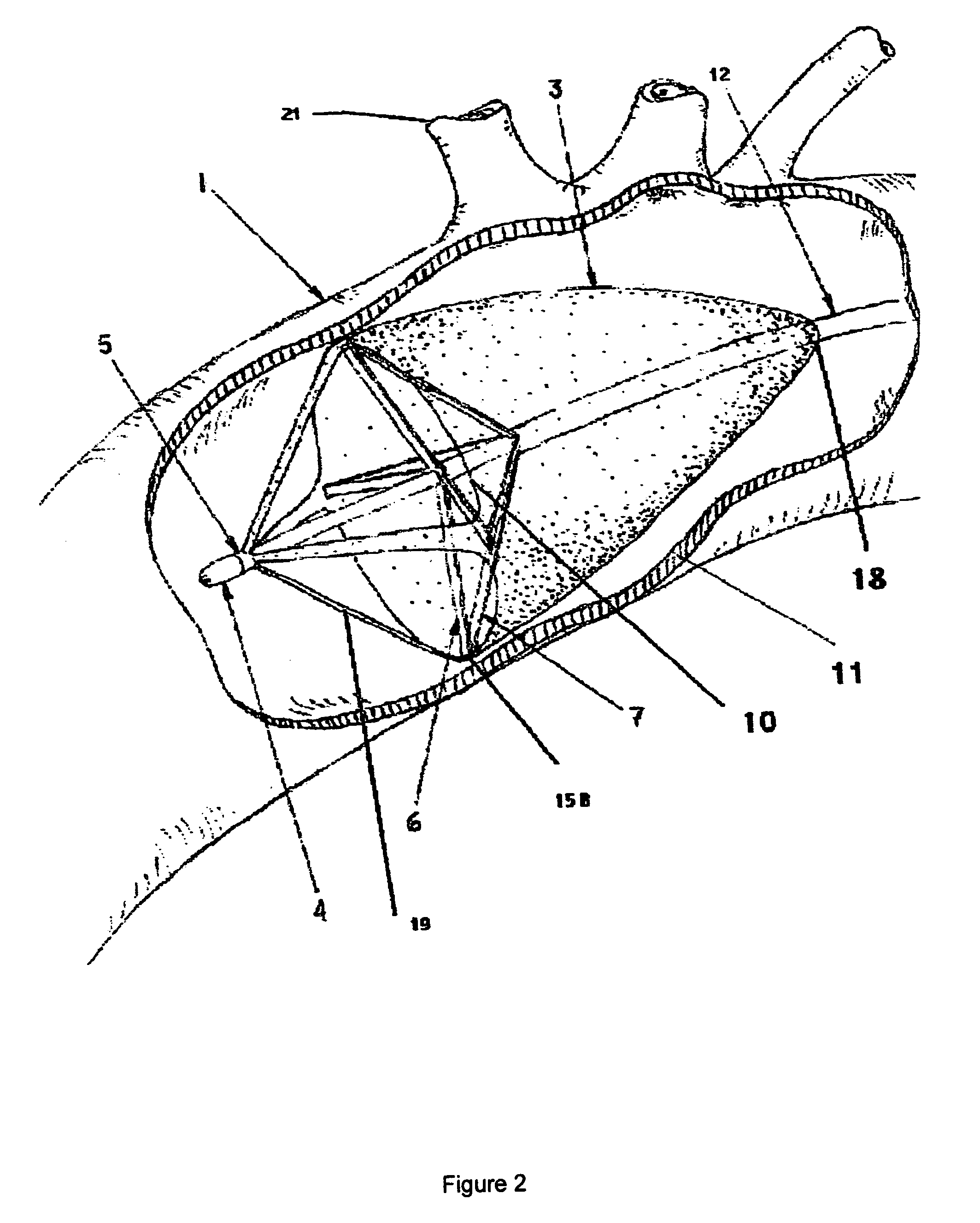Arterial embolic filter deployed from catheter
- Summary
- Abstract
- Description
- Claims
- Application Information
AI Technical Summary
Benefits of technology
Problems solved by technology
Method used
Image
Examples
first embodiment
[0040]Several embodiments of the invention are described, with reference to the figures. A first embodiment is shown in FIG. 1, showing a filter deployed within an aorta 1. The catheter system includes three concentric flexible elongated members 12, 13, and 14 having a distal region adapted to enter an artery, and a proximal region extending through the vasculature and eventually outside the body. The catheter system includes a filtration membrane 3, which is lightly stippled in the illustration. The filter has an expansion means, typically comprising several pairs of compression 6 and tension 7 struts disposed about the distal region of the flexible elongated member 12. The system as illustrated has four strut pairs, and might have as few as three, but preferably has six or more preferably eight pairs, to obtain good approximation of the edges of the filter 3 to the wall of the artery 1. When deployed, the distal regions of the struts 6 and 7 are deflected outward from the distal p...
second embodiment
[0051]Another embodiment of this invention is depicted in FIGS. 4 and 5. FIG. 4, similar to FIG. 1, shows a device of the second embodiment deployed at an appropriate location in the aorta. Key labeled parts, numbered as in previous figures, are three tubes 12, 13 and 14; tension and compression struts 7 and 6; a membrane 3, shaded; and a new component, a flexible hoop 17, to which the open proximal end of the filter membrane 3 is attached. It can be seen that the filter 3 is asymmetrically disposed with respect to the catheter tubes. Also labeled is the innominate artery 21 (also called the brachiocephalic trunk), which is the closest to the heart of the arterial branches from the aorta. Positioning the filter “upstream” of this artery, as illustrated here, will provide maximal protection from infarctions caused by debris such as clots and plaque. Entry of the catheter into the circulation through the femoral artery is schematically illustrated at lower left.
[0052]The operation of ...
PUM
 Login to View More
Login to View More Abstract
Description
Claims
Application Information
 Login to View More
Login to View More - R&D
- Intellectual Property
- Life Sciences
- Materials
- Tech Scout
- Unparalleled Data Quality
- Higher Quality Content
- 60% Fewer Hallucinations
Browse by: Latest US Patents, China's latest patents, Technical Efficacy Thesaurus, Application Domain, Technology Topic, Popular Technical Reports.
© 2025 PatSnap. All rights reserved.Legal|Privacy policy|Modern Slavery Act Transparency Statement|Sitemap|About US| Contact US: help@patsnap.com



